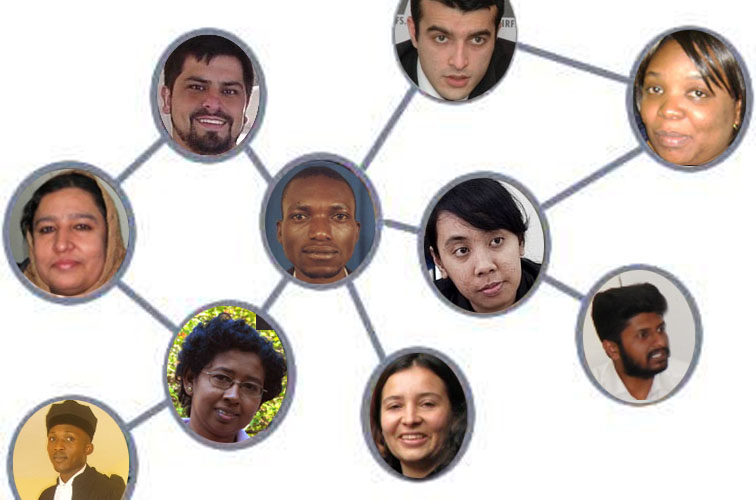
On 1 April 2011, Ajeng Larasati (Indonesia) and Bijaya Chanda (India) took part in a JusticeMaker conference call and brainstormed with each other and IBJ staff on the best way to evaluate training materials and determine the effectiveness of training sessions. This was the third conference call between the 2010 JusticeMakers Fellows. The first pertained to the Fellows’ respective successes in project implementation and strategy, and the second centered around which innovative approaches could be adapted in other countries. This call was facilitated by Wouter Kruijs (Geneva) and Gowri Janakiramanan (Singapore).
Both Bijaya and Ajeng work in prisons to teach pre-trial detainees about their rights under their respective countries’ criminal codes and constitutions. Bijaya focuses on explaining these rights directly to the detainees, while Ajeng trains tamping, who are convicted inmates that hold clerical positions in the prison offices. The tamping, in turn, provide guidance to Indonesian detainees who are awaiting their court appearances.
After briefly updating each other on the progress of their projects, Bijaya explained her experiences with training evaluation. She noted that due to the fact that they operate in prisons, she and her volunteers have limited access to inmates. In most cases, they only have one chance to speak to most of the detainees, and so need to find ways to conduct an immediate evaluation of their understanding as they progress through the material. To this end, Bijaya tries to maximize the amount of time she spends directly interacting with the prisoners during the training session—this allows her to more accurately measure and evaluate how much they have learned.
When it is necessary to conduct an “after the fact” assessment, Bijaya has developed a good rapport with the magistrates and prison officials, and questions them as to whether they can perceive any differences in the detainees’ level of knowledge. In this way, she can get a sense of how much the inmates have understood from the officials’ responses, and make changes in her technique as necessary.
Ajeng also experienced the benefits of building good relationships with prison officers. She finished her first training in March 2011, and since then has been exploring the best way to conduct a training evaluation. Because the initial class contained only five tamping, she developed a strong personal relationship with them. While this was very helpful to build rapport and confidence during the training session, it could have hampered getting frank feedback about her methodology.
The IBJ staff on the call suggested that she did not necessarily need to conduct a formal written evaluation, and that an informal dialogue session might be more helpful. Any hesitance to provide feedback could be countered with an assurance that by doing so, they would actually help Ajeng to assist even more people in the future. The staff also suggested that, if Ajeng was really unsure about being able to get objective feedback from the tamping, she might want to have one of her colleagues at LBH Masyarakat to conduct an evaluation in her stead.
Bijaya and Ajeng agreed that establishing a comfortable, trusting environment is one of the most important factors when it comes to conducting a successful training evaluation.
IBJ was also interested in learning how Bijaya and Ajeng handled the creation and evaluation of training materials. Ajeng primarily uses brochures for the tamping, which highlight certain key points about basic rights and the criminal procedure—this allows her to differentiate, during her trainings, between questions relating to specific cases and more general principles. Bijaya indicated that she uses more substantial printed materials in her training sessions, and she first distributes them to her own friends and colleagues in order to judge their quality.
By hearing about each other’s evaluation methods, both of the JusticeMakers picked up new strategies as far as gaining feedback when access to prisoners is limited is concerned. Bijaya’s practice of consulting with freed detainees about the effectiveness of her programs helps her to elicit detailed observations about her training, and the notion of involving outside evaluators to help can be effectively adapted.
The conference call again proved a useful tool for the JusticeMakers to educate each other on best practices across different jurisdictions, and furthered IBJ’s goal of creating a support structure for criminal justice stakeholders around the world.